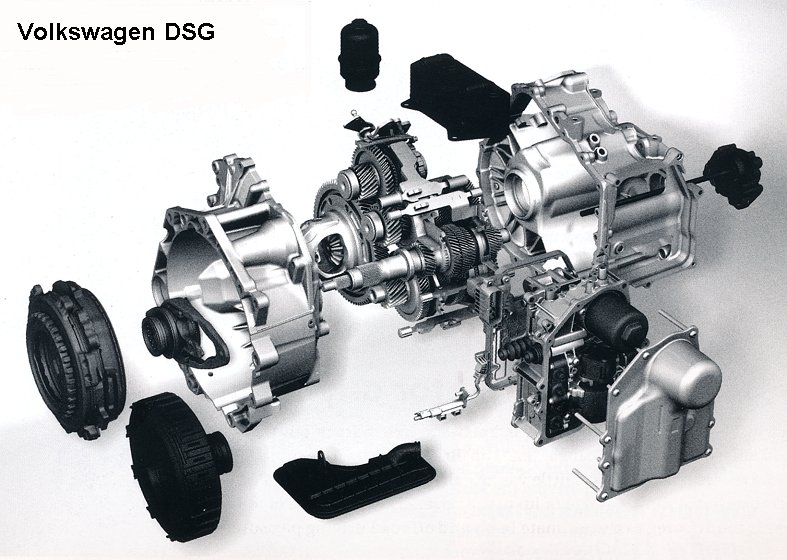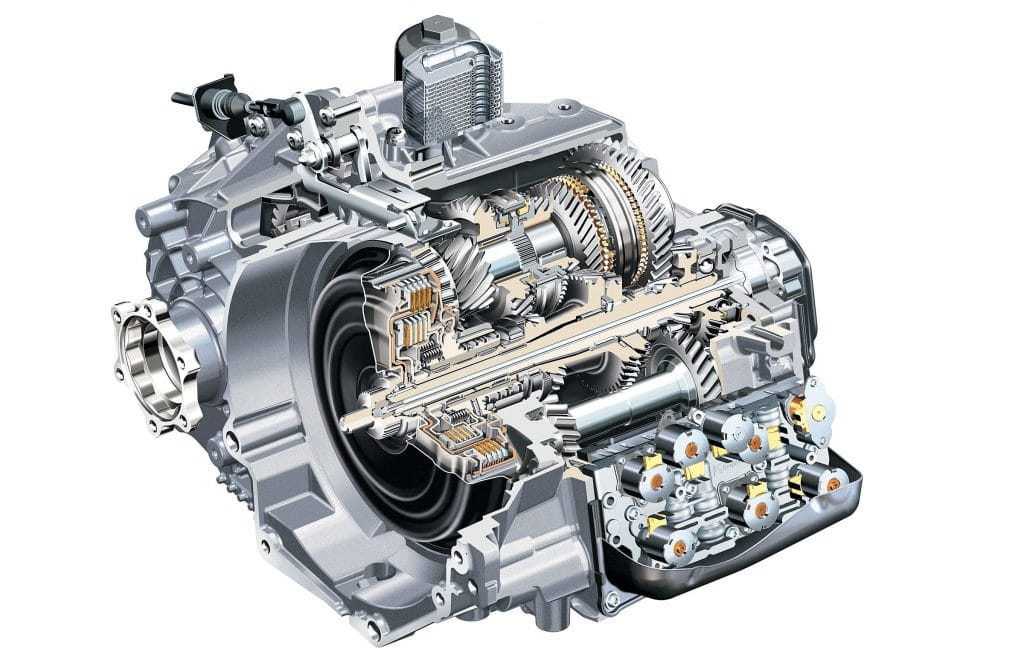
What Is A DSG And How Do They Work?
With the DSG (direct-shift gearbox) transmission, a dual-clutch automatic, Volkswagen and Audi made one of the biggest impacts in the industry in 2003, providing an efficient option that offers reliability and great power. And, it has the least downsides of all transmissions.
The DSG is effectively two separates electronically controlled manual transmissions built into one, where it is operated in a fully automatically mode and the computer decides when and how to shift the next gear. But it can also be operated in semi-automatic mode where the driver uses a gearshift lever to select gears.
Volkswagen DSG transmissions uses a transaxle design, which means that the same transmission case houses both the gears, using a torque-splitting differential so the axle shafts can operate at different speeds. A DSG-equipped vehicle has a flywheel, which fits into the input shaft of the transmission, and is engaged by a clutch. This causes the transfer of power from the engine to the drive wheel, through the transmission.

A dual-clutch transmission (DCT), or Direct- shift transmission (DSG) (sometimes referred to as a twin-clutch transmission or double–clutch transmission) is essentially a type of automated manual transmission in vehicles. They are closely related to a manual transmission and uses two separate clutches for odd and even gear sets. It combines the convenience of an automatic with the efficiency of a manual transmission.
Audi refers to these transmissions as S-Tronic but essentially they are the same
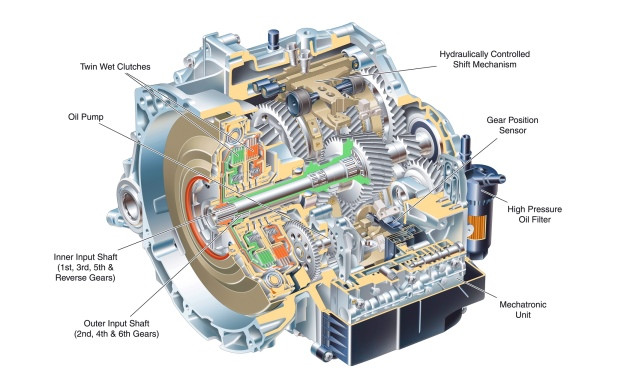
A mechatronic unit is the control centre of the gearbox and is only found in DSG transmissions. The Mechatronic unit is able to pre-select the next gear that you need before engaging the clutch and performing the shift, since it is working with two transmissions. This unit causes the DSG to shift gears at a very fast speed by simultaneously disengage one gear as it engages the next to deliver more power. The DSG makes driving in traffic, to hitting back roads or race tracks much more convenient.
Simply put, the mechatronic unit is a computerised control part of the dual-clutch system. This unique advanced dual-clutch automatic transmission is found in many cars, but mostly Audis and Volkswagens. The dual-clutch transmission consists of two sub gearboxes, each with its clutch, that work together to shift the gear.
Components of the Mechatronic Unit
-Control unit
-Valve body
-Solenoids
The control unit collects an analyse the information or data about the current condition of the Mechatronic unit and fluid via the speed, – temperature, – and pressure sensors. From this information, the Mechatronic unit knows exactly when to change to the next gear.
The solenoids are the executive elements of the control unit and its electrohydraulic valves. They allow transmission fluid to flow under a high pressure and they manage the hydraulic valves. The solenoids can work on a higher frequency, and this can help in faster gear changing.
The valve body manage the fluid flow to the various sections of the transmission and is responsible for hydraulic control in the automatic transmission. The valve body consists of the following components:
-Plates with fluid pad and valve seat
-Gasket with gaps in specific places
-Hydraulic valves
-Springs
-Plastic and metal balls
-Manual valves (on the upper plate) – it determines whether the car is in parking, drive or neutral or reverse position.
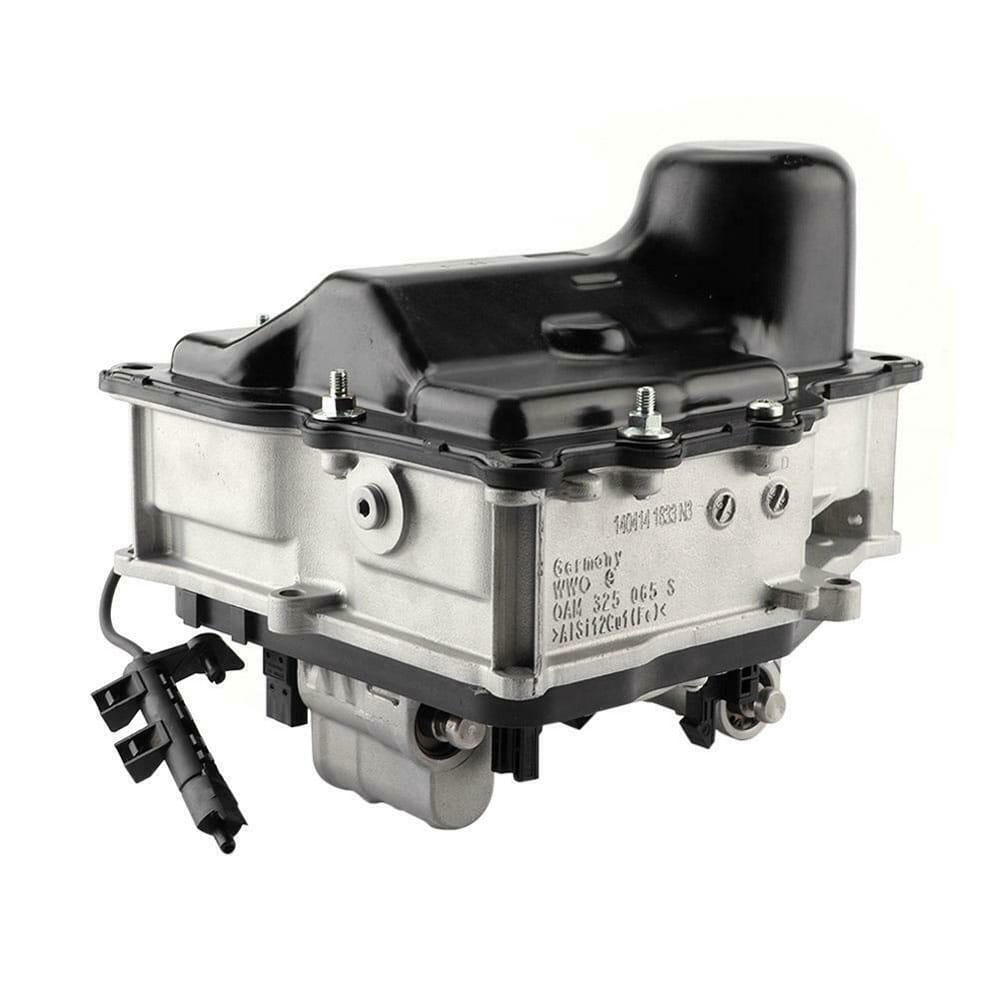
What Happens When The Mechatronic Unit Fails?
The challenge with these highly advanced transmissions is that at some stage something is bound to go wrong. When things do go south, you need expert advice. These days its not just any mechanic that can work on your vehicle anymore.
But what are the warning signs? Here’s the most common signs of a mechatronic unit starting to make trouble:
-Clonking in gears
-Selector warning lights
-Inability to select gears
-“PRNDS” lights flashing
-Gearbox keeps selecting the neutral position
When this happens its best to stop driving and speak to your local technician first. Its not all doom and gloom though. In days gone by it was only your local Audi and Vw dealership who could repair these sophisticated pieces of engineering. These days there are specialist repair centres who can do even a better job of repairing the transmission. In fact, dealerships these days will quote on replacement of the whole gearbox and maybe if you lucky only the mechatronics unit.
Vag Spec Centres have become well known through out South Africa as experts on all Vw group vehicles as well as BMW, Mercedes, Mini, SEAT, Porche and more. The group specialises in the diagnostic and repair services for DSG and STRONIC transmissions. They pride themselves in excellent and honest customer service and will go the extra mile to get you back on the road with expert advice, the latest equipment and years of experience between all their qualified technicians.
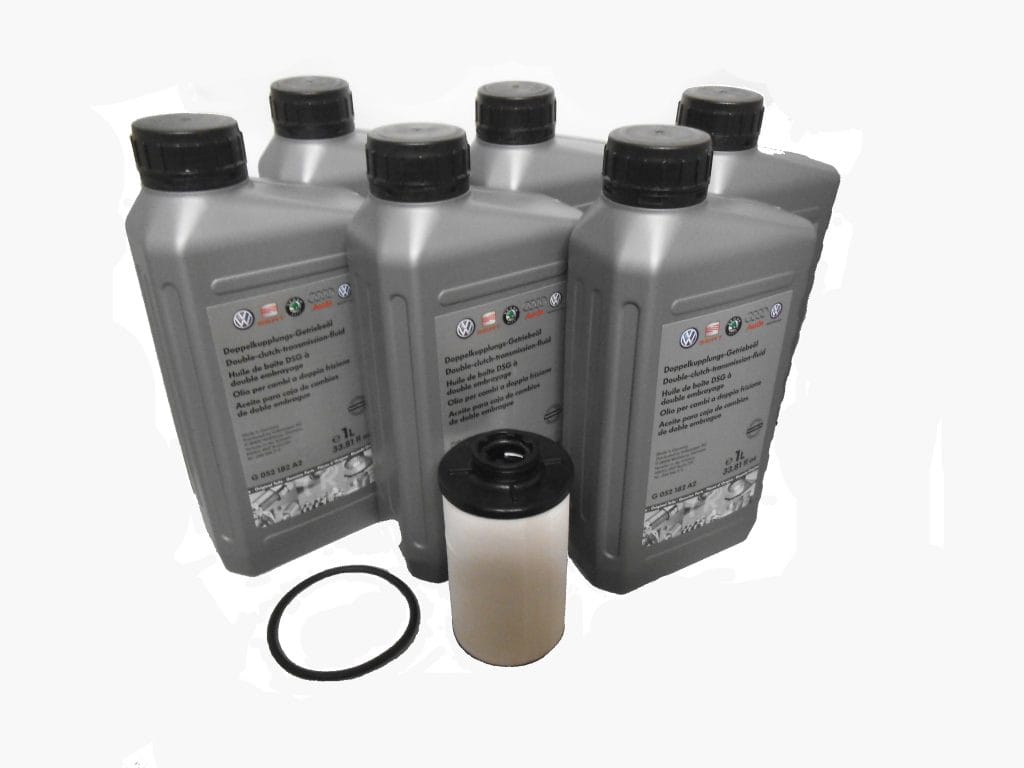
DSG Maintenance: Service Intervals
The exact service intervals will vary depending on the exact vehicle year, model, and transmission code. Every Volkswagen and Audi model include a recommended service interval in the owner’s manual. On the vast majority of models, a DSG transmission oil service is required every 40 000 to 60 000 kilometres. The older the model of the vehicle, the shorter the service intervals become.
When using your DSG vehicle on-track, it is wise to do the transmission service as often as from 30000 kilometres.
A DSG transmission that is low on fluid will not function properly, and continuing to drive a transmission that is low on oil may result in damage to the clutches, gear sets, or other internal components.
At VAG Spec Cape Town, we have qualified DSG specialists that can service or repair you DSG transmission. Contact us today for any queries or quotations.

